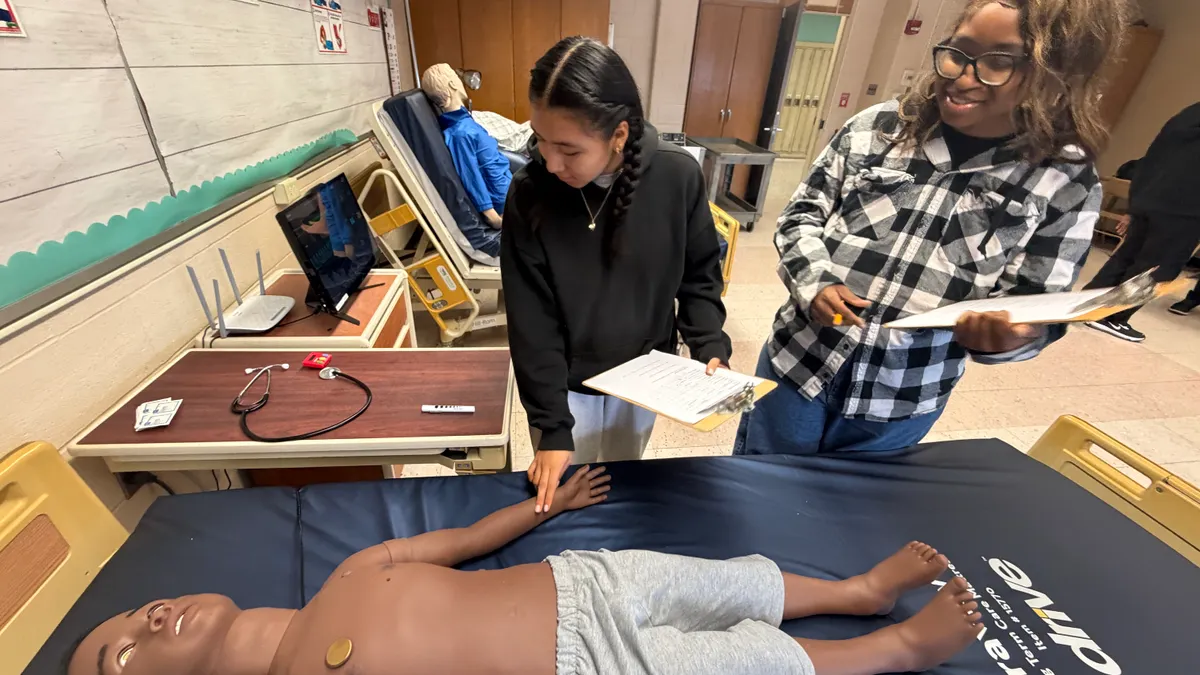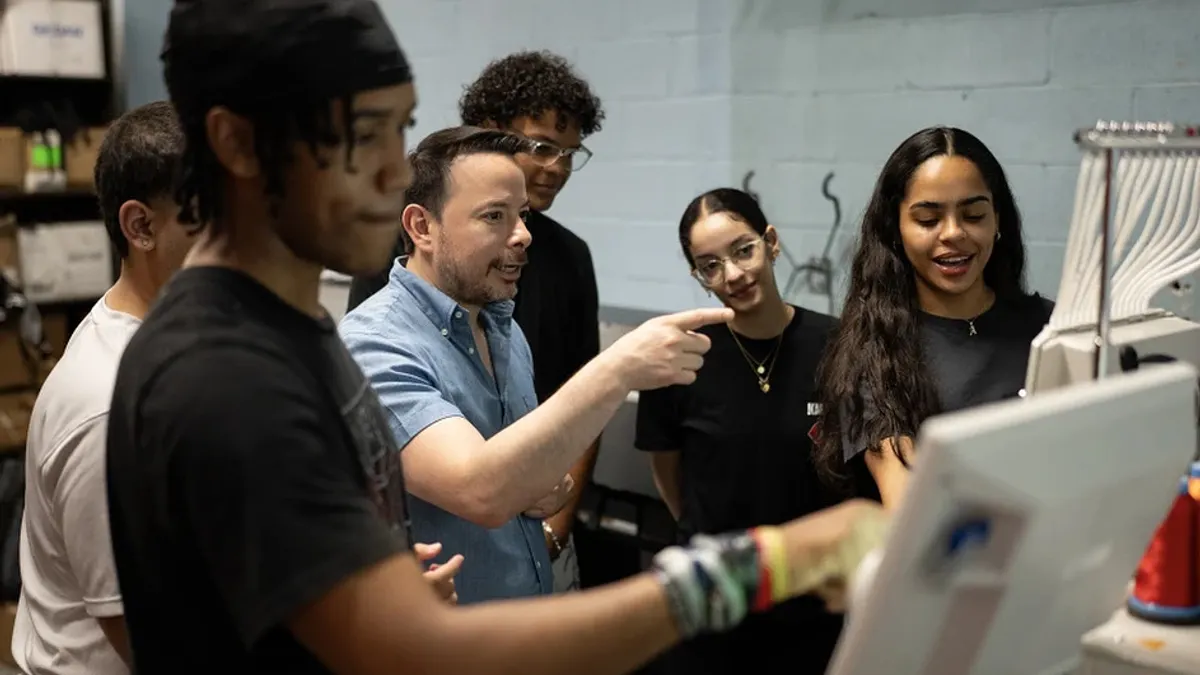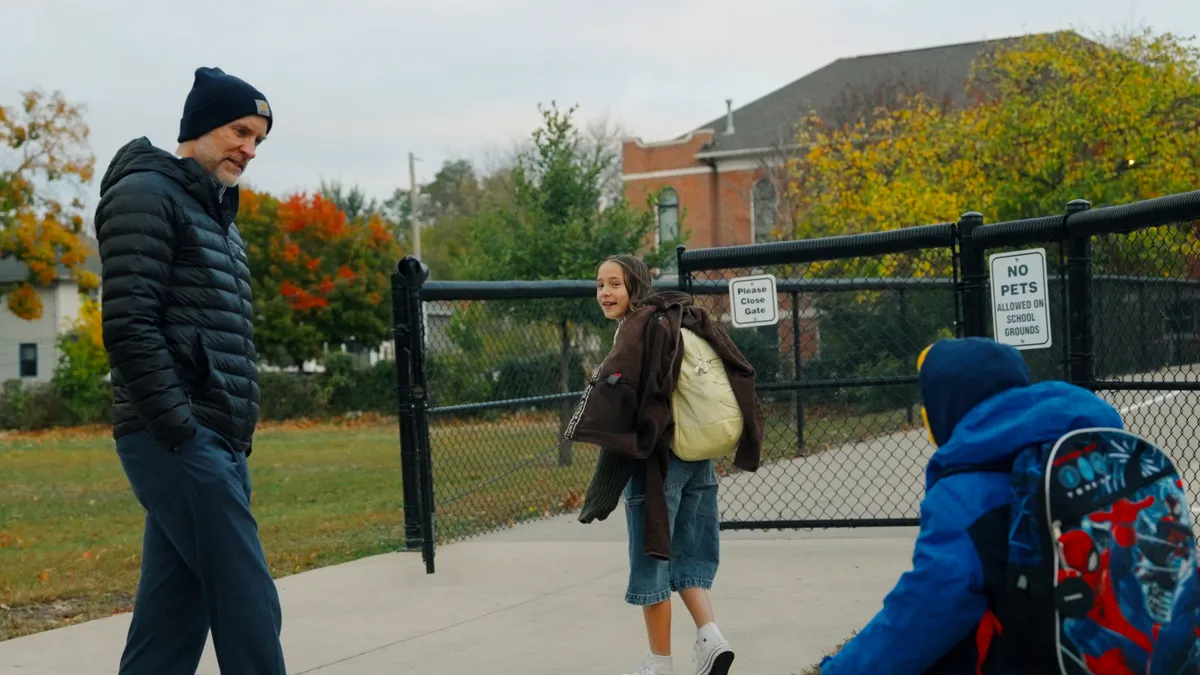As a former kindergarten teacher at a Title I school, Katie Benson said a majority of her students came from high-poverty households. So, when snack time rolled around, most didn’t have healthy options – or know about them.
“The kids didn’t know what are healthy foods or where to get them,” Benson, who now works at Ball State University in its early childhood, youth and family studies department, told a room of attendees at the annual National Association for the Education of Young Children (NAEYC) conference in Washington, D.C. “They didn’t know what these foods were called.”
At the time, Benson’s elementary school in Columbus, Indiana, was starting to infuse more project-based learning (PBL) into the curriculum. And after discovering her students’ unfamiliarity with healthy food options, Benson knew she had her classroom’s next project.
Planning, implementing and concluding
First, Benson had to figure out where the class stood on healthy food options. Together, the group made an “I wonder” chart, asking questions like, “Do we want to eat vegetables? What foods are healthy? Where do we get them?”
Food experts, including a local grocery store manager and a nutritionist, also spoke to the class about healthy food options and how to make them. A field trips to the store let kids pick out these foods themselves, and come presentation time, each group prepared their snacks for their classmates.
By the end, each student was equipped with an arsenal of healthy options.
“They were so proud, just giving [other students] the food and smiling to their classmates about what they’d made,” Benson said.
Benson’s example of PBL follows a three-phase structure – planning, implementing and concluding – proposed by Michael Haslip, an assistant professor of early-childhood education at Drexel University who co-led the NAEYC session, which focused on PBL in all-day kindergarten. Haslip and Benson were joined by Dominic Gullo, another education professor at Drexel and Gail Mindes, an education professor at DePaul University who retired this year.
Before starting a project, teachers should use classroom discussion to set the stage for success, Haslip said. Figuring out what students already know, what they hope to learn and what they’re curious about make way for a better outcome, he added.
After the planning stage, giving kids the opportunity to investigate, do fieldwork and conduct research lets them find some answers on their own. It all leads up to what Haslip called “the culminating event” – students presenting their work and findings to their peers, parents or other members of the school community.
It’s this kind of hands-on learning that’s been proven to get kids more excited about school.
“Projects are motivating for kids,” Haslip said. “Because these lessons are emotionally engaging, children are likely to remember what they’re learning.”
On its own, all-day kindergarten is central to kids’ learning and development, Gullo said, giving these young learners time to focus and reflect on activities, enhance social-emotional skills and boost their achievement. But adding PBL to the mix gives them the real-world relevance, deeper understanding, retention and collaboration they need to succeed, he added.
“Students use a spectrum of learning tools and engage in collaboration through project creation, [and] all-day kindergarten provides the time and the structure to optimize this outcome,” Gullo said. “The two marry to become reciprocally supportive of each other.”
Setting standards, measuring PBL’s success
In integrating PBL into the curriculum, teachers and schools still have to meet state and federal standards for subjects like math, English language arts (ELA) and Next Generation Science Standards (NGSS). But using standardized assessments to survey whether students have met these standards doesn’t really work when using PBL, Gullo said.
“Judging project-based learning using standardized achievement tests may not be a good match, because projects lend themselves to things like performance,” he said.
Instead, using evaluations to measure content mastery, participation and presentation format are ways teachers can measure PBL in a kindergarten setting. Many websites, including Edutopia, align Common Core standards with PBL to assist teachers, but another way to measure the method’s success is to make families a part of the process before setting expectations. Gullo stressed that taking time to understand where each student comes from is key in recognizing “the standards should not be developed for one type of child.”
“We know that today, regardless of where you teach, you have a variety of children who come from different backgrounds,” Gullo said. “Being an effective teacher is really knowing your children and their family and their background.”
Striking the right balance
PBL can allow for creative opportunities for learning, but when it comes to making this happen for kindergarteners, teachers need to strike a balance that ensures students are grasping concepts, Haslip said – not just enjoying a fun activity as a break from math or reading.
Part of this balance is making sure normal instruction isn’t lost in the mix. “There needs to be a balance between child-centered approaches and teacher-centered approaches,” he said.
It’s also important to note that teachers who are new to PBL will likely experience a “normal learning curve,” Haslip said. Online resources from organizations like the nonprofit Buck Institute for Education can help with their first steps.




 Dive Awards
Dive Awards














